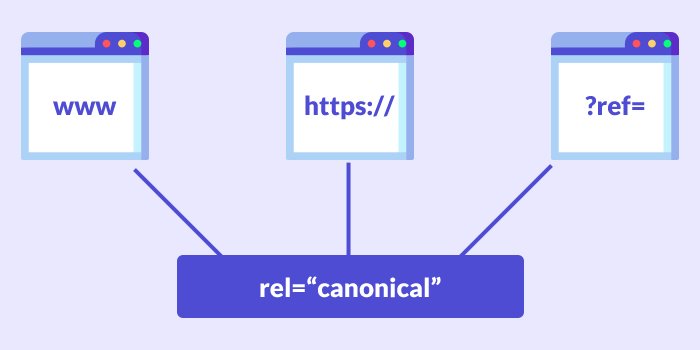
As an enterprising content producer, you undoubtedly recognize that crafting innovative, unparalleled content is crucial to forging your digital imprint and enticing your audience.
Nevertheless, generating novel concepts and content consistently can prove arduous, and rehashing or refashioning pre-existing content might seem like a compelling prospect.
While this approach can be an efficacious strategy in certain instances, it’s of utmost importance to ensure that you’re not unwittingly publishing indistinguishable content.
In this article, we’ll delve into what exactly constitutes duplicate content in multiple pages, why it’s a veritable scourge, and, most importantly, how you can skillfully avoid its tentacles.
Contents
What is Duplicate Content?

Duplicate content refers to any written content that appears on multiple online platforms. This can include duplicate or nearly-identical articles, blog posts, product descriptions, and various other forms of content. Duplicate content can crop up on the same website, across various sites, or even across different mediums, such as print and digital media.
Why is Duplicate Content Harmful?

There exist several reasons why duplicate content is pernicious. Firstly, search engines, like Google, penalize particular page that engage in the practice of publishing identical content. It tells search engines as an attempt to skew search engine results in the producer’s favor. Once a search engine indexed pages and detected duplicate content issues, it may give a duplicate content penalty by lowering its search engine ranking or even purging it from their relevant search query. The implications of this can be severe, as this may inflict considerable damage on the website’s traffic and visibility, which can tarnish your own site or website’s online image and standing.
Secondly, duplicated content can impair the web page credibility and authority with its audience. If users witness identical content on different web pages, they may cast doubt on the originality and value of the website’s content, which can put a dent in the website’s brand reputation and reliability.
Thirdly, duplicate content can lead to bewilderment and exasperation amongst the audience. If users repeatedly encounter the same content, they may start to feel that the website is not offering them any new or valuable information. This can result in reduced user engagement and ultimately harm the website’s revenue.
How to Avoid Duplicate Content
Now that we’ve established the considerable dangers posed by duplicate content, let’s move on to examining some strategies that you can employ to sidestep this menace:
Develop Unique Content
The best method to fix duplicate content issues is to generate distinctive content that is original, informative, and valuable to your audience. By creating premium content management system that caters to your audience’s interests and demands, you can cement your reputation as an authority in your field and foster trust with your audience.
Utilize Canonical Tags

In cases where you are required to publish analogous content on your website or other online platforms, it is advisable to use canonical tags to indicate the content’s original source. Canonical tag tell search engines which iteration of the content is the principal or original source, which can prevent penalties for duplicate content.
Repurpose Content Thoughtfully
Repurposing content creation can be a useful technique, but it must be executed thoughtfully to sidestep duplicate content. For instance, you can convert a blog post into a video or infographic, but you must ensure that the novel content is sufficiently distinct from the original and provides unique value to your audience.
Verify for Duplicate Content
There are a plethora of tools available online like Google search console, that can assist you in verify or identify duplicate content. These duplicate content checker can compare your content to other sites and multiple URLs and identify any resemblances or matches. If you detect any duplicate content, you can then take remedial measures to address it, such as removing the content or adding canonical tags.
Use Citation and Linking
If you need to incorporate content from another source into your own, it is essential to use proper citation and backlinking techniques. By providing attribution to the original source, you can avoid being penalized for duplicate content while also demonstrating credibility and respect for the original content creator.
Customize Syndicated Content
If you syndicate content from other sources, it’s important to customize it to suit your audience and tone. Simply reposting or copying content from other websites without providing any unique perspective or value to your audience is likely to result in penalties for duplicate content.
Conclusion
Technically duplicate content is a perilous threat that can harm your website’s visibility, credibility, and authority. However, with the right strategies, you can skillfully avoid the risks and reap the benefits of original, high-quality content. By creating unique content, utilizing canonical tags, repurposing content thoughtfully, verifying for multiple versions or duplicate content, using proper citation and linking techniques, and customizing syndicated content, you can ensure that you are not unwittingly publishing indistinguishable content. With these techniques in your arsenal, you can safeguard your website’s online image and standing and establish yourself as a dependable and authoritative source of content in your field.
Tim has spent more than two decades in organic online marketing, working with some of the most well-recognized online brands in scaling their content marketing campaigns.
Connect with Tim on Linkedin & Twitter.
- Diagnosing a Sudden Drop in Organic Traffic: The Technical SEO Checklist - July 1, 2025
- How to Create More Linkable Content in the Age of AI - May 1, 2025
- Link Cost vs. Link Value: How to Balance the Equation - April 18, 2025
